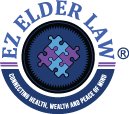
July 18, 2011 Paul A. Kryglik, Director Office of Regulations Social Security Administration 6401 Security Blvd Baltimore, MD 21235 Re: Program Operations Manual System SI 1120.220, cash loans Dear Director Kryglik: I am requesting a ruling from your office on an issue involving Program Operations Manual System (POMS) SI 1120.220, cash loans, with respect to […]

